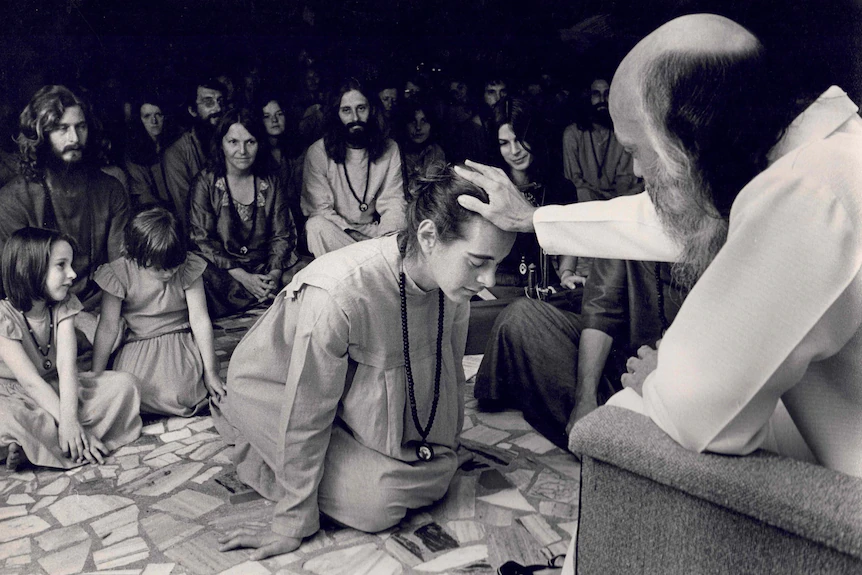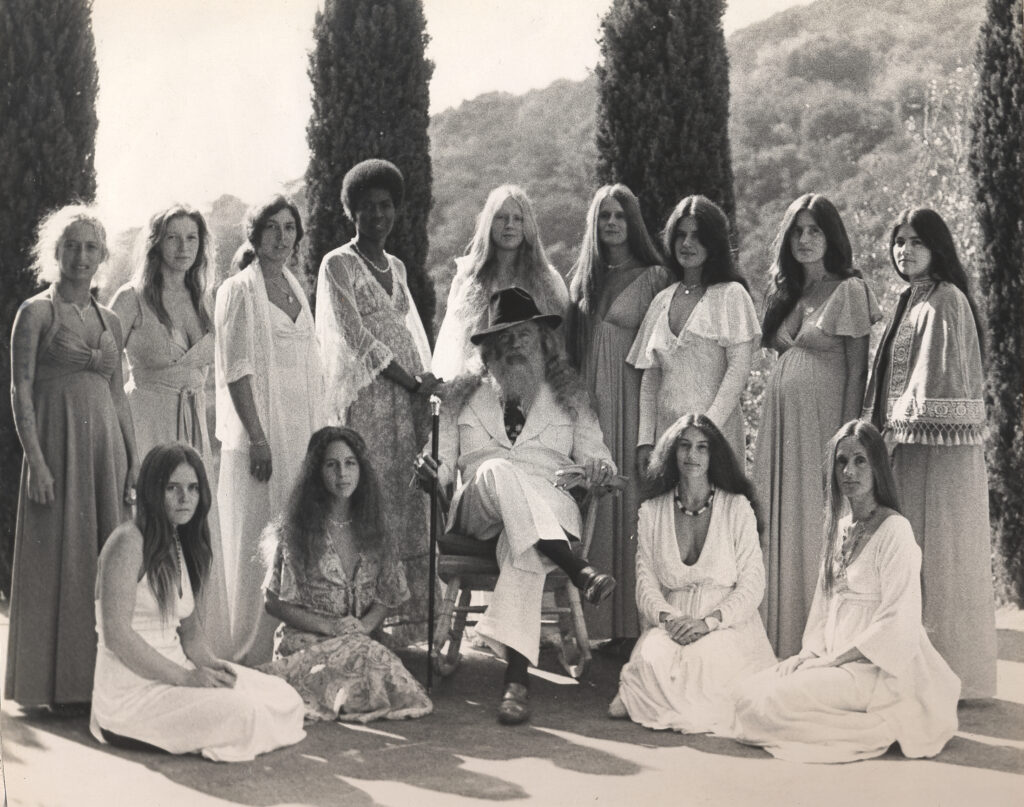
Signs You’re In a Cult, Not a Church
|
|
A cult is a social group that is defined by its unusual and non-traditional, religious, spiritual, or philosophical beliefs and rituals. A cult has a charismatic leader who is “the Axis Mundi” and believes that the entire world revolves around his theories and line of thinking. He requires “exclusive devotion” to himself and his unorthodox beliefs or goals. He also requires absolute obedience from his followers. Cults can range from small, local groups to international organizations with millions of adherents. “Christian cults” are groups that have a Christian background but are considered to be theologically deviant. Examples of these are the Church of the Latter-Day Saints, Christian Science, Jehovah’s Witness, and the Unity Church.
Their beliefs deny some or most of the fundamental Christian teachings.

For I know this, that after my departure savage wolves will come in among you, not sparing the flock. Also from among yourselves men will rise up, speaking perverse things, to draw away the disciples after themselves.
Acts 20:29-30
The dictionary defines a cult as a “great veneration of a person, ideal, or thing, especially as manifested by a body of admirers; a religion or sect considered to be false, unorthodox, or extremist, with members often living outside of conventional society under the direction of a charismatic leader.” As of right now, there are 2500-3000 active cults in the USA and thousands more around the world. Statistically, there are more men than women in cults who are recruited when they are going through distressing emotional conflicts; during those vulnerable times, they are promised companionship, peace of mind, and security.
Other Examples of Cults
This is a list of just a few of the cults that showed up starting in the 1950’s. In 1955-1978, The Peoples’ Temple was led by Jim Jones. 909 members of that cult died of mass suicide. The Branch Davidians, led by David Koresh in 1955-1993, led to the death of 77 people. In 1957 until 1991, Saul Newton led a cult (Sullivanians) of over 500 members. They disbanded after he died. Children of God International is another cult that began in 1968 and is still currently led by their leader David Berg. Heaven’s Gate, led by Marshall Applewhite, started in 1972 until 1997 and caused 39 members to commit suicide. Another well known cult is the Charles Manson Family which started in 1969. The Rajneesh movement in Oregon, led by Osho also started in 1979 and ended in 1985. And the Church of Scientology which began in 1953 and is currently still running.

Descriptions of a Cult
1 – They reject orthodox, Biblical teaching and oppose all critical thinking.
There are two prevalent “Christian” cults today. The first one is the Jehovah’s Witness, also known as The Watchtower Society. They currently number 8.7 million members worldwide – 1.2 million in the US. The second one is The Church of Jesus Christ of Latter-Day Saints, also known as Mormons. There are currently around 17 million members worldwide – 6.7 million of those are in the US alone.
Neither organization believes in the Trinity, nor do they believe in Hell or eternal damnation. They downgrade Jesus and discredit His complete sacrifice for sin on the cross. Both cults consider good works to be a “process” of salvation, suggesting that the redeeming work of Jesus on the cross is not sufficient.
The only work required for salvation is our belief in Jesus and trusting in His redeeming work on the cross.
Jesus answered and said to them, “This is the work of God, that you believe in Him whom He sent.”
John 6:29
2 – Cult leaders act like lords.
A cult leader will often isolate their adherents and penalize them for wanting to leave the group. The following is a gruesome, macabre example of a cult leader:
Jim Jones was a psychopathic, manipulative, controlling, and insidious leader. He was an early social justice warrior who promoted Marxist or communist ideology to implement his utopian worldview. He founded the People’s Temple in Indiana during the 1950s, moved to California in the mid-60s, and gained countless followers there, exerting full mind control over them. His magnetic charisma prevailed. In the mid-1970s, he relocated hundreds of his followers to Jonestown, Guyana on the northeast coast of South America to avoid tax evasion charges by the US Government and to establish a commune based on his ideology. Many people who relocated to the settlement became aware they were now confined to a type of isolated prison in the jungle. In 1978 rumors began to circulate, alleging that human-rights abuses were occurring within the People’s Temple organization in South America. The United States Congressman, Leo Ryan, went there to investigate. One day later, Ryan and four defectors were murdered by gunfire while boarding a return flight home. Shortly thereafter, Jones led all of his 918 followers—including 304 children—to commit suicide by drinking Kool-Aid spiked with cyanide.
While this appears to be an extreme example of a dangerous cult, there have been others like it throughout history. Looking at this bizarre example helps us to analyze the traits of less manipulative cults. We need to know how cults function, what keeps people in deception, and how to help someone leave.
3 – Leaders glorify themselves as infallible while also promoting a previously unknown revelation.
In the eyes of their followers, they are the ultimate authority. These kinds of leaders are often authoritarian, charismatic, and narcissistic. They emphasize special doctrines outside of the Scriptures, and no one in the group is permitted to think or reason for themselves.
4 – The organization is managed like a cartel or mafia, requiring absolute loyalty to its leaders.
In an article entitled “The Power Abusers,” Ronald Enroth demonstrates some of the tools used by cults to control their members:
- Behavior Control: An individual’s associations, living arrangements, food, clothes, sleep, habits, finances, etc., are strictly controlled.
- Information Control: Cult leaders deliberately withhold or distort information, lie, propagandize, and limit access to other outside sources of information.
- Thought Control: Cult leaders use loaded words and language, discourage critical thinking, bar any speech critical of the cult leaders or policies, and teach an “us vs everyone else” doctrine.
- Emotional Control: Leaders manipulate their followers via fear (including the fear of losing salvation, the fear of being shunned, etc.)
5 – They claim exclusivity.
Those in cults are often be led to believe that they are in the right. Everyone who believes something else is wrong and destined to certain perdition or doom.
6 – Intimidation, fear, and isolation are used on those who have joined.
The leader is paranoid about the “outside world.” When that’s the case, threats are made against members who want to leave. They are often kept isolated from their family members. The even go as far as dishonoring the family unit by crossing Biblical boundaries of social behavior and morality, such as sexual purity and personal ownership.
7 – They cross legal boundaries.
Cult leaders usually influence their members in such a way that they consider themselves above the law. In some groups, there is no financial transparency, oversight, or accountability to anyone.

Signs You’re Probably in a CULT
I marvel that you are turning away so soon from Him who called you in the grace of Christ, to a different gospel, which is not another; but there are some who trouble you and want to pervert the gospel of Christ.
Galatians 1:6-7
1 – A leader is the ultimate authority.
The leader has charisma, claims supreme knowledge, and considers himself to always be right. As a member, you’re not allowed to criticize or question your leader, even if he is wrong. Members of the organization have to forfeit their critical thinking in order to belong. The leader will usually convince his followers that he is divinely directed and all other religions are false and diabolical. And his objective is to replace every individual’s identity through gradual and incremental sessions of indoctrination. This helps his goal of total mind-control over all the adherents.
2 – The group suppresses skepticism and forbids criticism.
To maintain “spiritual purity,” the members must avoid contact and conversations with “outside persons”. They are also forbidden to read any outside material in order to achieve spiritual harmony within the group. For this level of domination, cult leaders utilize manipulative and authoritarian mind-control over the members.
3 – The group delegitimizes former members.
Cult members must shun defectors to prevent being infected with their “so-called truth”. To leave the cult would result in eternal damnation and spiritual suicide. The members are encouraged to “tell on” anyone who has negative thoughts or doubts.
4 – The group is paranoid about the outside world.
They promote theories about the “end of the world” and deliverance from the evil world which is intent on their destruction. The charismatic leader fosters his theories and ideological system to transcend the “imperfections of life outside”.
5 – The group relies on “shame” tactics to maintain conformity.
The leader imposes strict codes of conduct, guilting members for their shortcomings. They are made to feel unworthy of love and acceptance unless they conform to the rules and confess any shortcomings.
6 – The leader considers himself above the law and moral standards.
This idea allows the leader(s) to exploit the members economically and sexually without repercussions. Sexual grooming is common and members must simply “ignore and/or justify” their leader’s immoral behavior.
7 – The leader uses different means to weaken the minds.
They will use constant lecturing, obsessive praying, and the lack of sleep to maintain the people’s minds in a constant debilitated state. The leader keeps the devotees constantly fatigued, and deprived of sensory input. The group uses “thought reform” methods to correct each other. “Brainwashing” is used to break down a person’s sense of individual identity. Short cliches such as “just follow your leaders” or “doubt your doubts” are used constantly so that the followers don’t critically analyze complex issues.
8 – The group is elitist.
Cults see themselves as selected enlightened ones given the task of transforming the world. This creates a sense of greater unity and purpose. Members are required to cut all relationships with family, friends, or any other contacts who do not agree with the teachings of the cult leader.
9 – There is no financial transparency.
Members are required to make great sacrifices and are not allowed to know where their money goes.
10 – The group performs secret rites.
This is usually discovered only after becoming a member and is used to solidify a member’s loyalty to the group. Their loyalty to the “inner circle” is affirmed through shameful proceedings which make the initiate more susceptible to manipulation.

How to Get Out
My people have committed two sins: They have forsaken Me, the spring of living water; and have dug their own cisterns, broken cisterns that cannot hold water.
Jeremiah 2:13
Walking away from a cult is difficult. By the time folks realize that the organization is a cult, they have developed a strong social circle and strong emotional ties to the group. To make matters worse, the abusive cults will also dominate other areas of a person’s life including personal, private, professional, and financial aspects.
Here are some considerations when leaving a cult:
Run, Don’t Just Walk Away! And Don’t Look Back
To minimize physical, emotional, and sometimes physical threats, it is essential for people who want to break free from a cult to leave as soon as they realize they are in danger, have been abused, mistreated, and deceived.
Don’t attempt to slowly “transition” out of the organization or to try to help others leave before you do. Get out as soon as possible and do not look back! Do not discuss your decision with other members of the group. Stop all contact with the group and its members. Plan your departure carefully and leave without regret or second-guessing your decision. Try to find supportive people ready to receive you when you leave.
Be clear with your former friends and family as to why you made the wrong decision to join the cult. And do not associate with anyone who makes threats, is angry with you, or is unsupportive.
Write a Letter to the Leadership
This is a written statement to break ties with an organization that you no longer want to be identified with. The letter you write should clearly state why you have left. Also, demand that your name and all contact information be removed from their records and that they must not contact you in the future. A follow-up letter and legal help might be needed to motivate the organization to honor these requests. Look for an opportunity to use this letter to rebuke them for false teaching and any personal harm you feel they have done to you.
Be direct and specific.
If you have received Christ during this process and deeper freedom that only Jesus can provide, use this letter as an opportunity to preach the gospel to the lost and break any spiritual chains the devil has attempted to bind you with while in the group.
Document the Process
To begin the extensive departure process and your journey to full recovery, keep a personal journal every day to document your feelings and stress points. You need to recover your rightful independence, personal identity, and intellect. Document the people who support you, and avoid those who do not. Document the conversations of those who were threatening or unsupportive. In addition to being a source of inner healing, it could also be a resource if you need to seek legal advice or contact law enforcement.
Seek Counsel
Try and find the counsel of a Christian mentor who you trust and pray that God may provide a new support network for you. Former members of a cult often feel guilty for abandoning the only friends and family they had known while being confined in the cult. They are lonely and feel misunderstood. They suffer low self-esteem, depression, fear, paranoia and memory impairment.
Social Re-Integration Will Be a Process
Finding a way to “fit in” again is a long process after being socially isolated for a while in a cult. Having been trained to harshly judge “outsiders,” people are often left wondering, how should they carry on a casual conversation at work? Can other people be trusted? How can social skills be developed without always being suspicious?
There is no fast and easy way, but try to encourage them to reconnect with understanding family members. Look for a church that offers a “Recovery Program” which provides group therapy with a Christian orientation. Find a loving church fellowship that is structured on the Bible and God’s love, and get involved.
The recovery will be slow.
So often the person feels foolish and angry for having been manipulated so deeply. Deceitful recruitment tools were used successfully to persuade them to join the cult during a time of great vulnerability. People leaving cults must overcome bitterness and self-incrimination. It’s hard to find a church that they’ll trust immediately. They’ll first need to mentally disassociate themselves from the cult leader who constantly falsely claimed to be divinely appointed by God.
Bill’s Story
A Forensic Counselor for Former Cult Members gives this narrative of a cult member who defected after 13 years of deceit:
Bill was a lonely and stressed college student at a “crossroad” in life. A girl heard his story and invited him to attend a prayer meeting on campus. He attended every week and then every day; at last, he felt wanted and accepted. The preacher gave answers to his struggles of loneliness and lack of direction in life. Bill quit college and became immersed in his new church family, which he thought was his only hope for salvation, according to the preacher, Jacob. The preacher considered himself to be a divinely appointed prophet, chosen by God to usher in a new spiritual awakening. In his daily sermons, Brother Jacob reinforced the instructions that only he was to be obeyed. Bill had to work two jobs and relinquished every paycheck over to Brother Jacob.
The church members were forbidden contact with family members or former friends nor could they watch TV or read newspapers. Jacob preached every night for hours and God forbid that anyone should fall asleep! The idea was to replace all independent thinking and objective reasoning with his twisted teachings only. Every member had to empty their minds of anything contrary to his doctrines. They all had to participate in the regular ordeal of confession and redemption; everyone was humiliated in front of the others in order to bring themselves to a base level. Finally, when Bill was banished to live in the garage, away from his “wife” and child, he realized he was living a nightmare and had utterly wasted 13 years of his lifetime. He decided to escape the group, which then caused feelings of shame and guilt. He was continually exhausted emotionally as he desperately tried to recoup his sanity. Even after consulting three counselors, he still felt empty and meaningless without a real direction in life.
Conclusion
“The thief comes only to steal and kill and destroy: I have come that they may have life and have it to the fullest. I am the good shepherd.”
John 10:10
This blog is meant to describe the evil deception of cults, whether they’re small groups or large organizations. Most cult members don’t realize that they are desperately trapped in some philosophical or spiritual mindset.
I encourage you to look for lonely people in hopeless despair and befriend them, leading them to Jesus Christ, who is the One and only solution to life.
You will find them at work, at school, on campus, and in the parks. Recruiters for cults are out there as well, looking for them. They promise a new life, a new family, and a new hope when really, it’s only demonic deception!
Only Jesus can give a real, new, and abundant life!
Jesus is the only answer to life because He is indeed the Way, the Truth, and the Life!
Jesus said to him, “I am the way, the truth, and the life. No one comes to the Father except through Me.
John 14:6
Other Resources: Sources: Lifton, R. (1961). Thought Reform and Psychology of Totalism Norton and Company, Inc. – Singer, M (1995) Cults in Our Midst Jossey-Bass Publishers
Get Weekly Content.
Sign up below to receive weekly emails and updates.
Subscribe
Receive updates for new blog posts
Most Popular
- ●
- ●
- ●
- ●
- ●
- ●
- ●
- ●
- ●
- ●